What sort of pages rank on your site? What keywords fit your site best? Do ranking pages bring in leads? Whether you have a full-fledged keyword strategy or just a list of keywords your pages rank for, the answers to these questions can help you find ways to improve your positions and gain more traffic.
Oncrawl’s analysis examines the three-way interaction between keyword strategy, on-page technical SEO, and organic page performance. Our graphics reveal what works and what doesn’t on your site, so you can do more of the former and less of the latter.
This week we’ll show you how our Customer Success Managers use Oncrawl to answer common questions about keyword strategy.
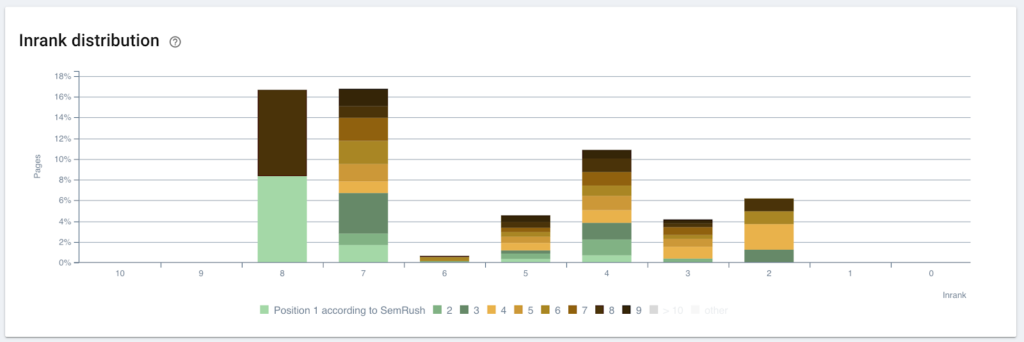
Setting up keyword strategy analysis in Oncrawl
We’ve used SEMrush data in the examples below, but you can use the keyword and position tracking tool that you’re most familiar with. The procedure is the same.
Export keyword data and ingest it as part of an Oncrawl crawl
Export the keyword data you want to use. You may be interested in the following types of data:
- URL (required!)
- Keyword
- Current position
- Keyword difficulty
- Keyword competitivity
- Monthly search volume
- Estimated PPC
- Trending searches (this month)
- …
Save this data in CSV format. The first line of the CSV file should contain column headings, which are best expressed without spaces or special characters. The URL column should be named “url” or “URL”.
Zip your CSV file.
Upload your CSV file to Oncrawl:
1. From your project’s main page, click “Add data sources”
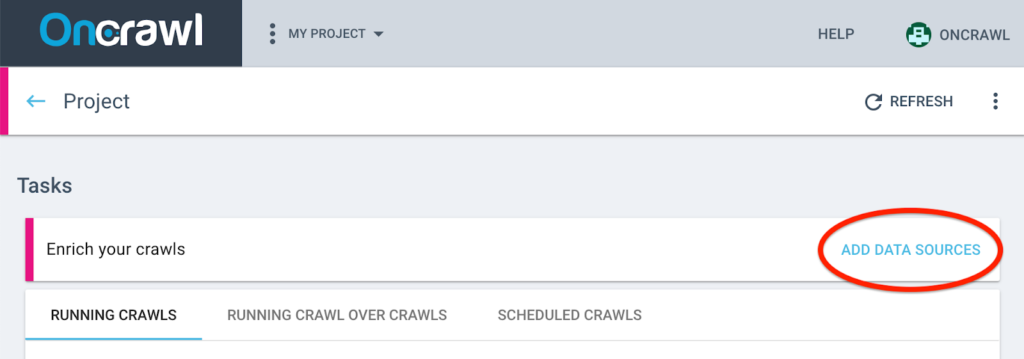
2. Switch to the “Data ingestion” tab
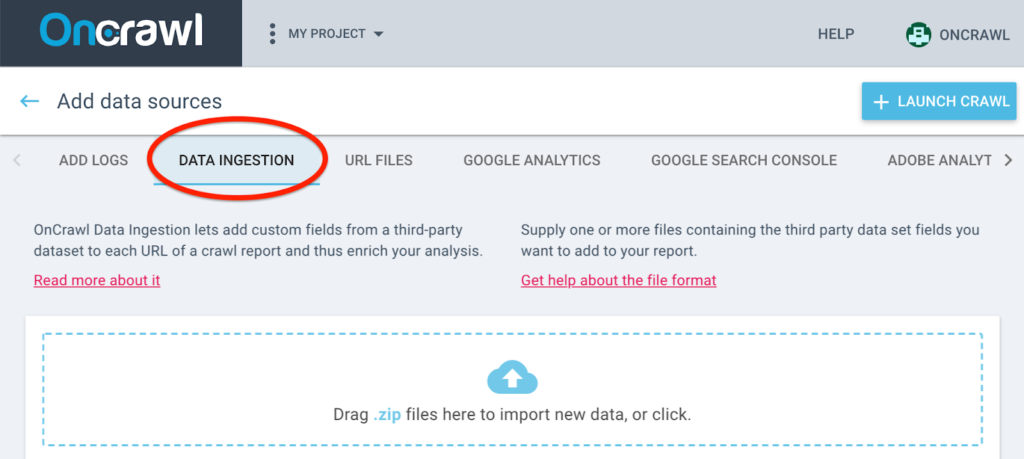
3. Drag and drop your zipped CSV file onto the blue dotted zone to upload it.
Set up and run a crawl using this data:
- From your project’s home page, click “+ Set up new crawl” (Or click “+ Launch crawl” from the data sources page.)
- Scroll down to the “Analysis” section and expand the “Data ingestion” options.
- Tick the “Enable data ingestion” box and chose your CSV file from the drop-down list.
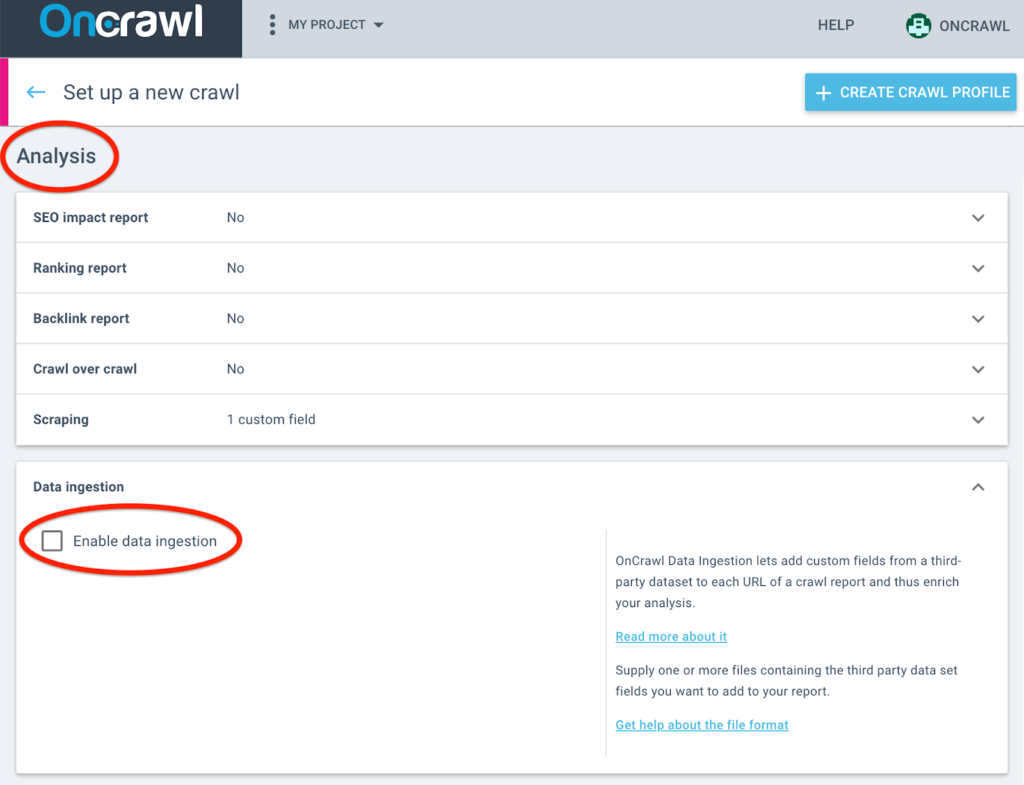
4. Launch the crawl.
Create keyword strategy segmentations
We’ve created segmentations for the following keyword metrics:
- Keyword search volume – use groupings that make sense for your site
- Keyword difficulty (Very low, Low, Intermediate, High, Very high)
- Positions (1, 2, 3, 4, 5, 6, 7, 8, 9, >10)
- Search intent (High)
- Keyword competition level (Very low, Low, Intermediate, High, Very high)
- Estimated PPC (<1, 1-2, 2-3, >4)
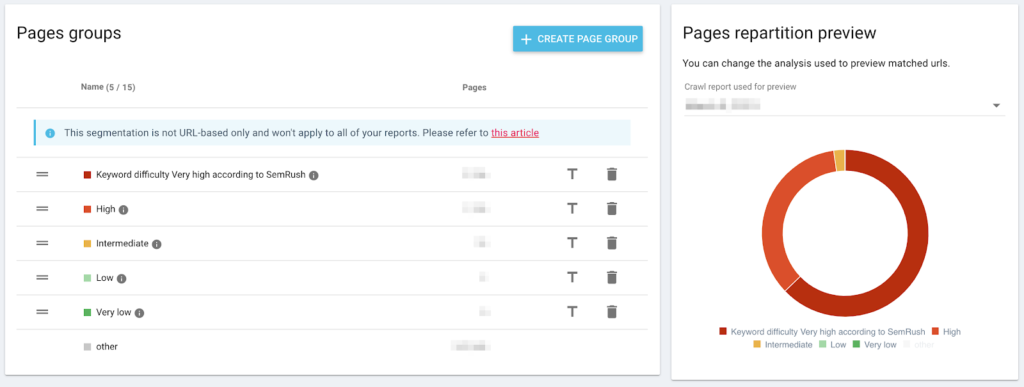
Using Oncrawl to analyze keyword strategy
What type of keywords earn clicks?
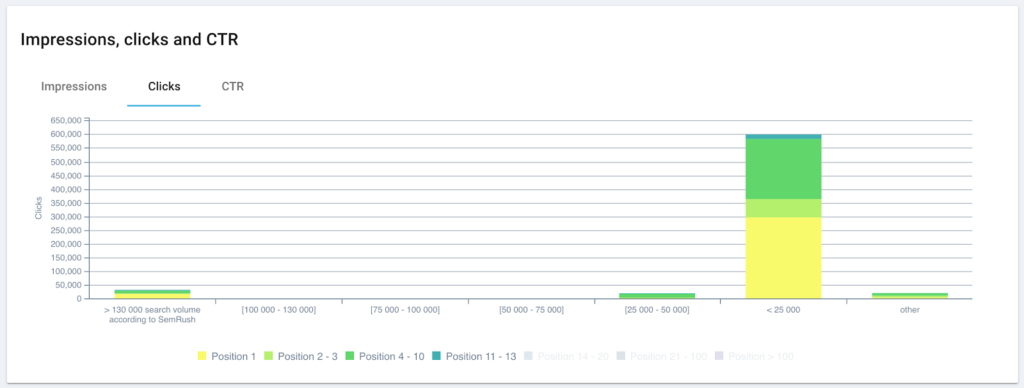
Although high volume keywords are extremely worthwhile (approximately 20 pages account for almost all of the clicks in the first column), they are often far outranked in volume of visits by keywords with low monthly search volumes–by a factor of nearly 7x on this site.
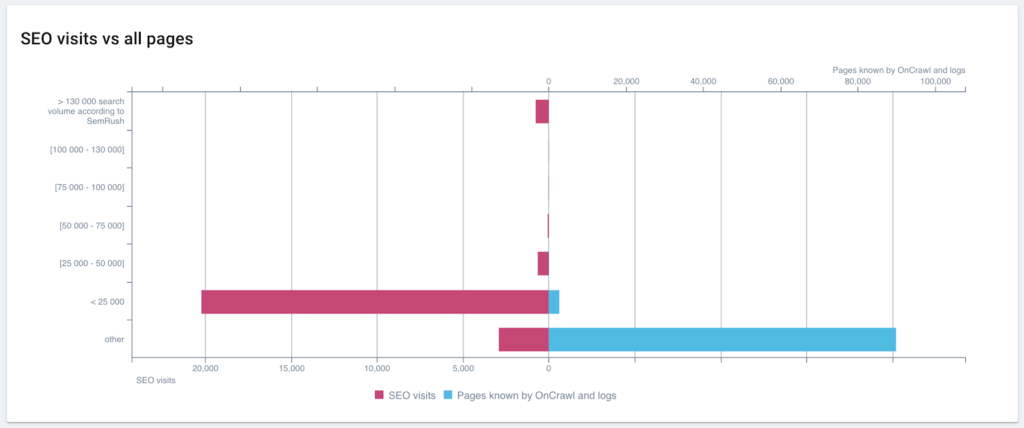
This bears out when we examine organic sessions vs the number of known pages that rank for a keyword category.
Is it worth it to aim for high difficulty keywords?
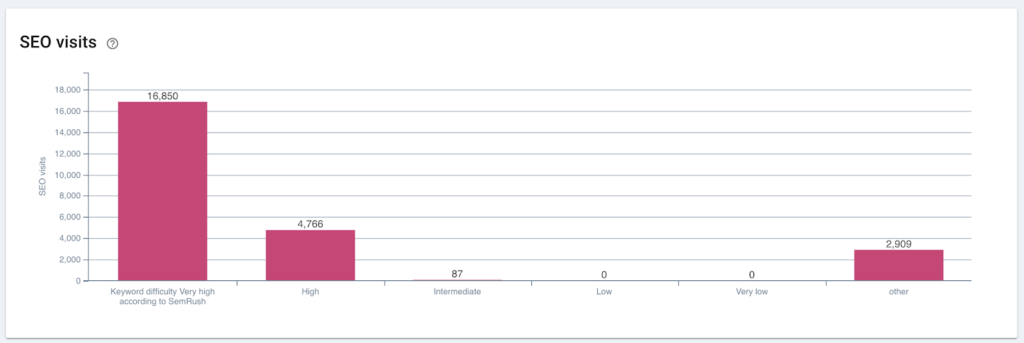
Like everything in SEO, “it depends.” In the case of this site, though, investing in getting ranked for high difficulty keywords pays off: highest and high difficulty keywords bring in 10x the organic visits in number of sessions than the rest of the site combined.
What is the effect of orphan pages on my page ranking and performance?


Orphan pages that rank are generally crawled less frequently (about 40% less on this site) than pages in the structure that rank for the same category of keywords.

We’ve seen that individual pages that rank well for keywords with the highest number of impressions (left) attract a significant number of organic visitors. 10% of pages that rank for keywords with large numbers of monthly searches, though, are orphans.

This is particularly important when we observe that none of the orphan pages that target these keywords receive any organic visits. Reintegrating these pages to increase their internal popularity can help improve their position in the search results and bring in visits.
Likewise, about a quarter of all pages that target low-volume keywords (which bring in the most clicks on this site) are orphans that receive no organic visits. Increasing the number of pages in your site architecture by 25% for this category can bring a significant boost in traffic.
Is ranking well enough to earn organic visits?
Another way to ask this question is: “am I ranking for the right keywords?”, or “do people click on my URLs?”
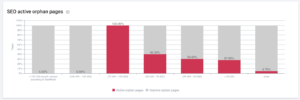
Active pages, or pages that earn organic visits, are one way to measure the effectiveness of a keyword strategy. For this site, for example, over 90% of pages in position 1 gain organic visits. As expected, this number declines gently over the first page of the SERPs, and drops sharply after that. Only 2% of pages that don’t rank are active.
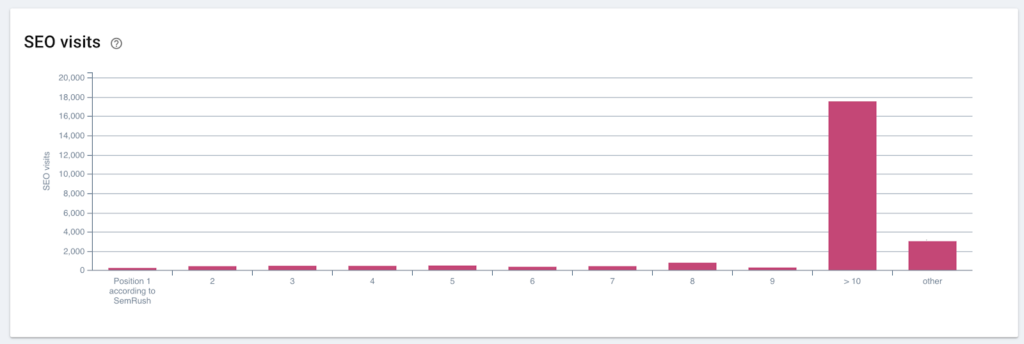
SEO or organic visits are also an indicator of keyword effectiveness. Here is another site, that earns relatively few visits from top-ranking keywords. A significant proportion of its organic visits come from pages that don’t even appear on the first page of the SERPs.
Are the pages that rank crawled enough?
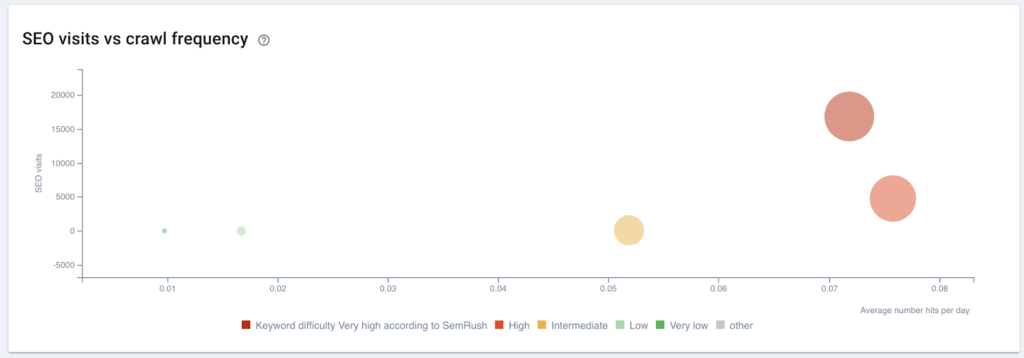
You should be interested in crawl frequencies when there’s a correlation between crawl and visits on your site. For example, on this site, when difficult keywords are crawled more often, they attract exponentially more organic visitors.

But not all of the pages that rank for high-difficulty keywords have been crawled recently. Verifying that these pages are crawlable and that your crawl budget is correctly distributed can be worth looking into, since we know that crawls and visits are correlated.
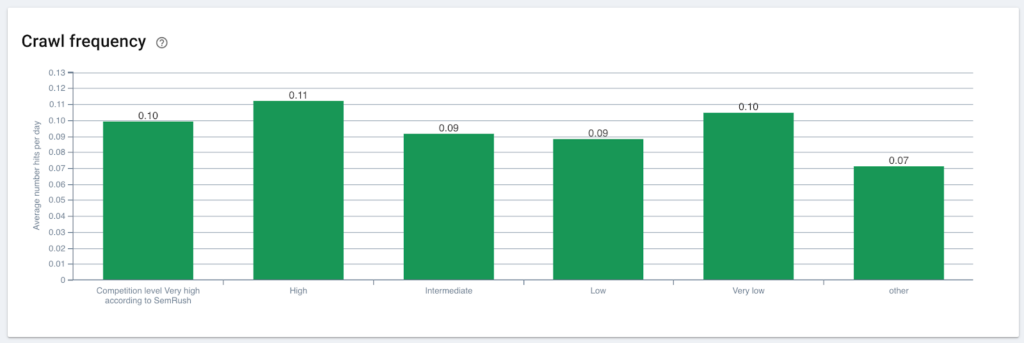
You may also be interested in crawl frequency if you’re testing SEO optimization on selected pages to test how optimizations can influence your ranking compared to your competitors. Is one page every ten days frequent enough to implement optimizations across all of your site?
Do search trends have an influence on my site?


Current search trends often have an impact on crawl, both in number of pages crawled and in crawl frequency.
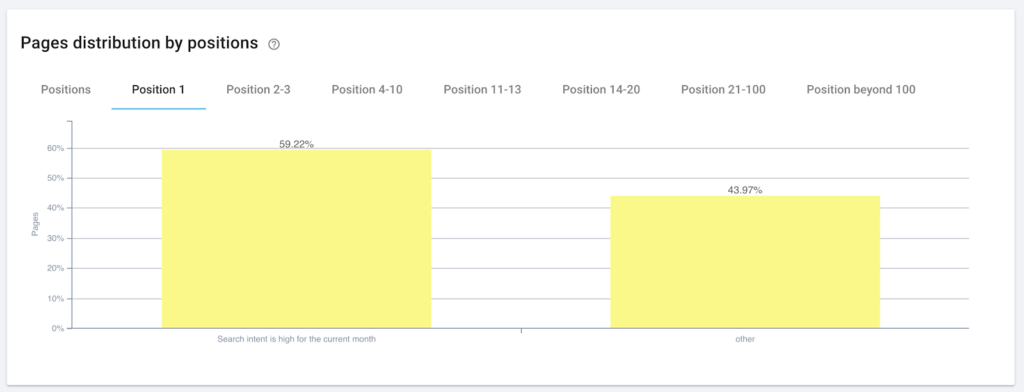
Often this will influence positions. In the case of this site, the pages affected by trending search intent are more likely to rank in any position on the first two pages of the search results. (However, this only affects a relatively small percentage of the site’s ranking pages.)
My pages are ranked well — why aren’t they getting clicks (or conversions)?
Looking at classic on-page and technical issues for ranking pages can explain user behavior and reveal opportunities for improvement:


Here, for example, the percentage of slow load times follows nearly the same pattern as bounce rates according for the top-ranking keywords per page.
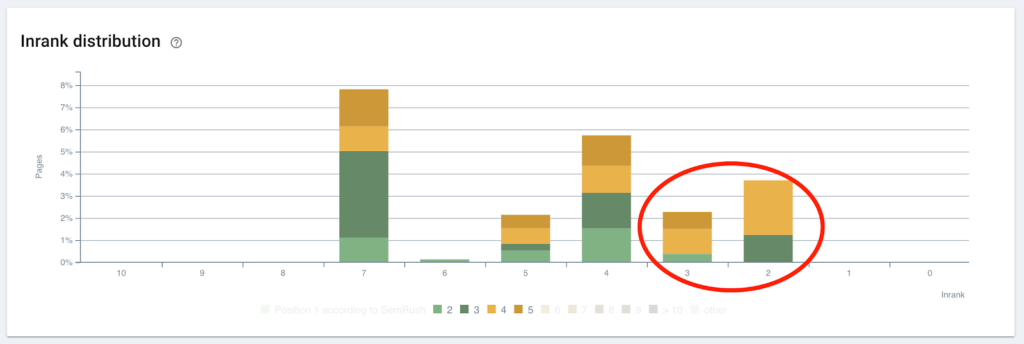
Internal linking and page depth can improve the internal popularity of pages that rank, but don’t yet rank well, such as the pages ranking in positions 2-5 with a low Inrank (2-3).

Or addressing duplicate content issues can help push pages that rank in second and third positions into position 1.
It’s your turn to test your keyword strategy with Oncrawl
Using your keyword analysis data to view on-page, ranking, and user metrics on your site provides insights into the strengths and weaknesses of your keyword strategy. Oncrawl’s charts provide a visual representation of answers to common (and less common) questions about why your keywords perform they way they do.
By testing your own keyword strategy, you’ll discover how to earn more organic visits. Cross-analysis with your keyword data will help you estimate whether you can gain more visibility by targeting different types of keywords, or by first improving SEO for certain page groups. In either case, the answers are in the data.

